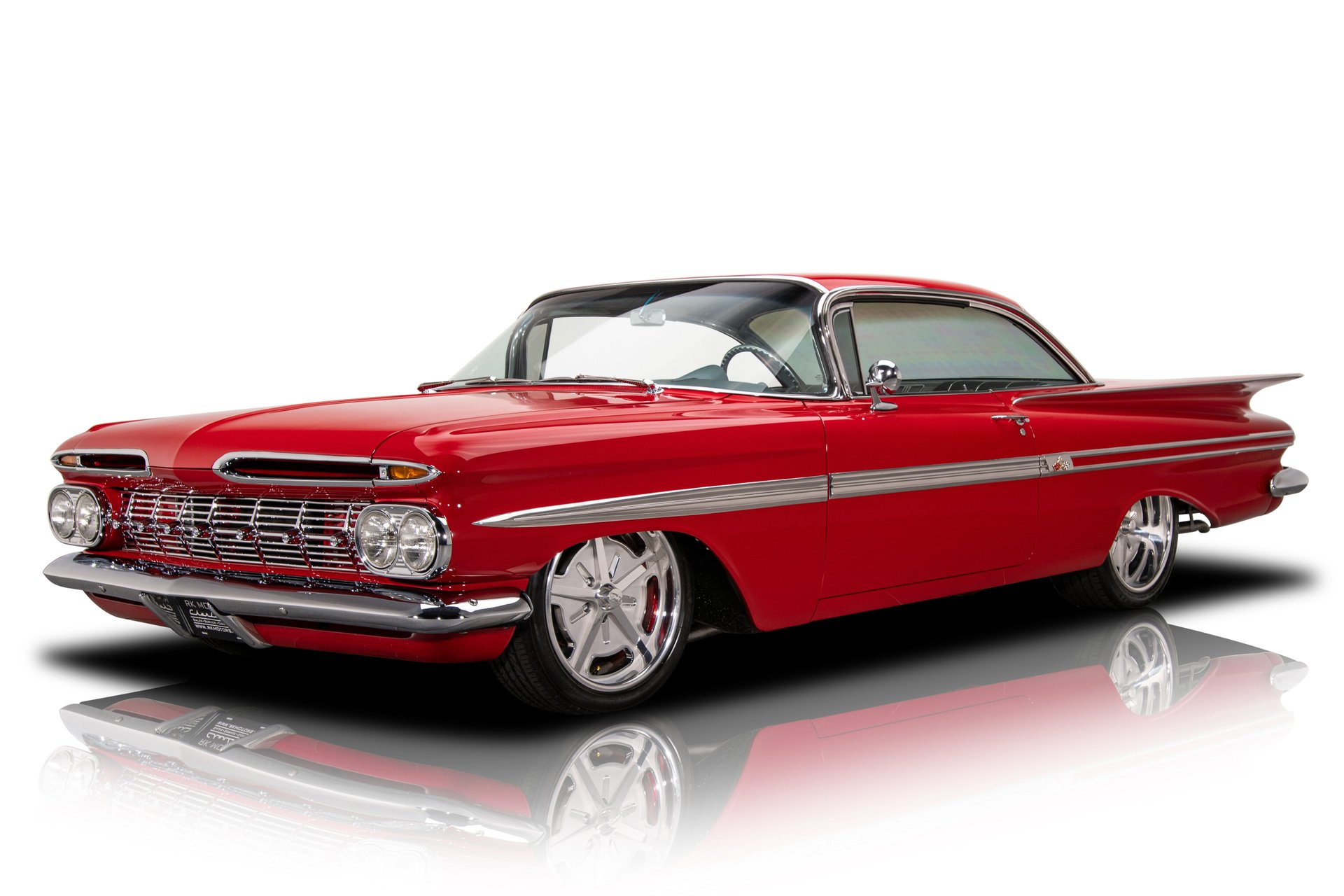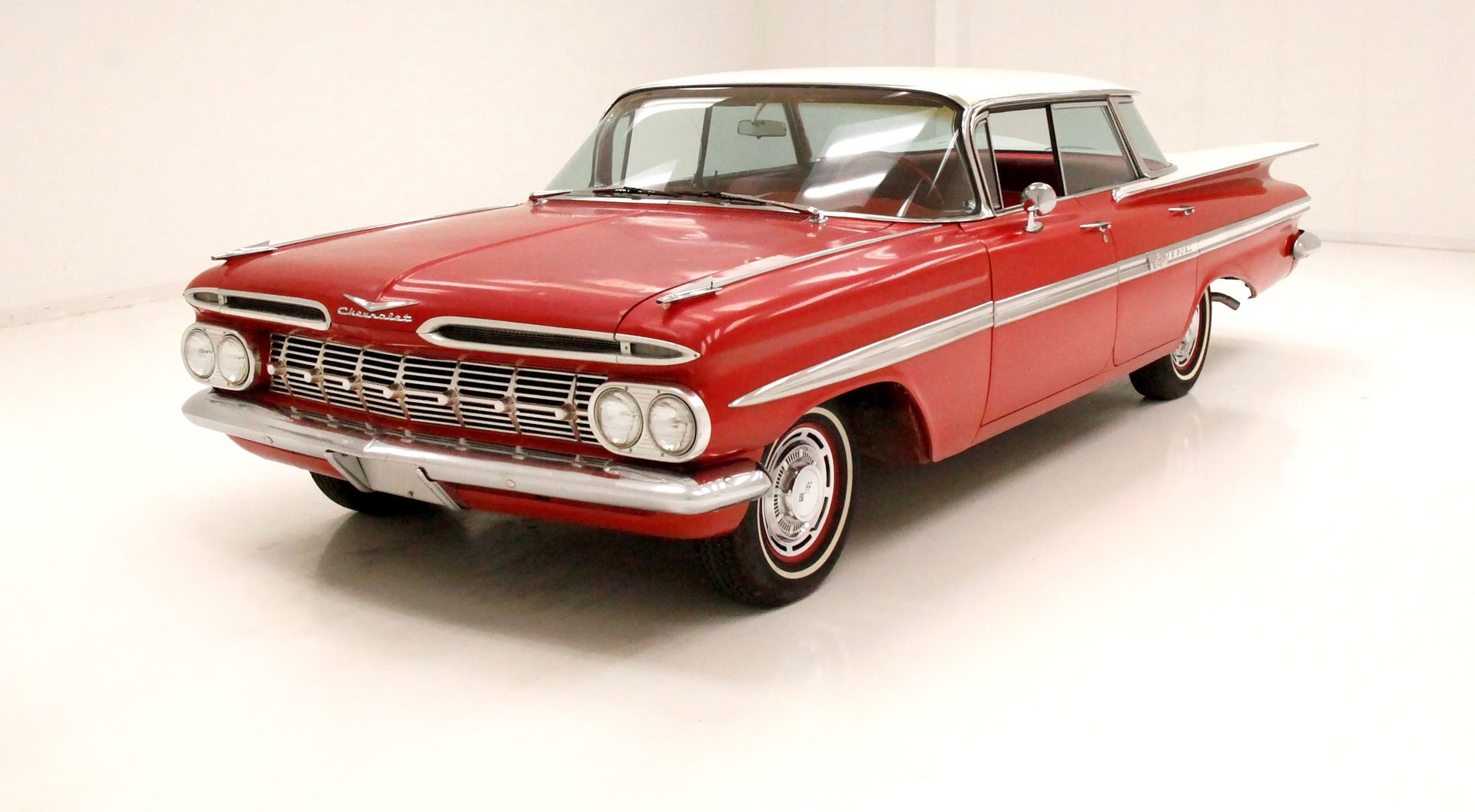What’s the quintessential 1950s Chevy? Many would say one of the Tri-Fives, with the 1955 model often seen as the purest of the series, especially the Nomad version.
Others might argue that the iconic ’57, with its available fuel injection, should hold the top spot.
However, I present a contender as the ultimate classic 1950s Chevrolet: this 1959 Chevrolet Impala convertible, equipped with fuel injection.
We’re all familiar with the tale of Chevrolet and Chrysler in the 1950s, but let’s revisit it briefly: Chevrolet, once seen as conservative and conventional, transformed in 1955.
While Pontiac is often celebrated for evolving from a brand with a staid image to a performance icon, Chevrolet deserves similar recognition for doing so a few years earlier.
The 1955 Chevrolet embodied the best of Harley Earl’s design studio in America’s popular, affordable car market, enhanced by fine engineering and Chevrolet’s modern V8 engine—a first in over 35 years for the brand.
The engine grew from 265ci to 283ci in 1957 and was joined in 1958 by a new big-block engine measuring 348ci.
Chrysler, too, had been a conservative brand, and its cars from the early 1950s weren’t exactly known for style. However, this changed in 1955 when Virgil Exner’s studio brought Chrysler into the modern era.
Exner then achieved a stylistic breakthrough with the 1957 “Forward Look,” which instantly made the rest of Detroit’s designs seem outdated.Then, General Motors struck back with a bold statement for 1959.
The speed with which GM managed to adapt and match Chrysler’s forward momentum speaks to the strength of GM at its height, though not all credit goes to Harley Earl; his stylists had to remind him that his once-keen sense of style was beginning to fade.

This is part of why the 1958 GM lineup was a short-lived experiment.The 1959 Chevrolet was unlike anything before it: a sleek, sculpted machine with striking fins, a unique trunk lid, and distinctive taillights.
The front end had headlights level with the grille, a fresh design feature emerging at the time after years of high-mounted lights.
All GM cars in 1959 showcased variations of these design elements, which were more refined than the somewhat repetitive designs of Ford and Chrysler (although Chrysler made a respectable attempt to stay current).
In terms of power, Chevrolet’s engine lineup in 1959 remained similar to 1958’s.
The big-block 348ci engine could deliver up to 335 horsepower, and a four-speed manual transmission became available from the factory, having been initially offered for dealer installation earlier in the year.
However, the fuel-injected 283ci engine continued to stand out, marking its final appearance in Chevrolet passenger cars.
The version with hydraulic lifters maintained a 250-horsepower rating, while the solid-lifter variant received an increase to 290 horsepower in 1958, which carried over into 1959.
This high-horsepower Fuelie was only offered with a manual transmission.According to expert Warren Leunig, only 173 Chevrolet passenger cars were equipped with fuel injection for the 1959 model year.
Though there’s no breakdown by body style, this engine has rarely looked more at home than in this Roman Red Impala convertible.
Outfitted with a four-speed transmission and the powerful small-block, this car is a prime example of what one might call “Harley’s Revenge.”
Other notable features include a red and white bench seat interior, power windows, Autronic Eye, pushbutton AM radio, Continental kit, and more.
A car like this deserves solid documentation, which this stunning convertible unfortunately lacks.
It was built by well-known restorer Ed Pogue, who believed it to be an original Fuelie. You’ll need to dig deeper, talk with the seller, and review its history to make your own judgment.

